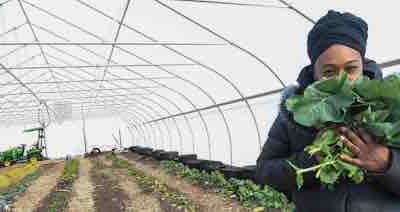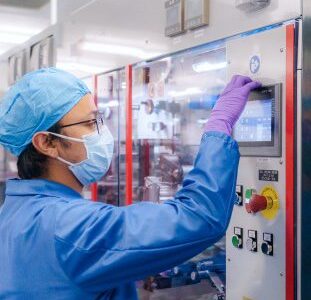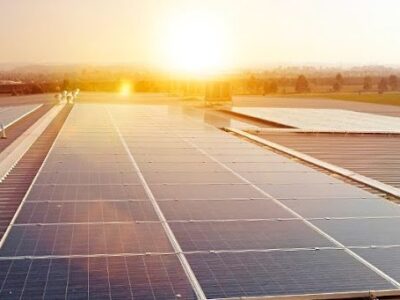
One of the 17 Sustainable Development Goals (SDGs) put forth by the United Nations is to make affordable and clean energy available to all parts of the world, with an eye on giving more people access to renewable energy sources such as wind and solar. To reach this goal, advocates will have to overcome a number of challenges. One of the biggest will be finding enough land to accommodate massive wind and solar projects without encroaching on farms.
A potential solution is “agrivoltaics,” also known as solar sharing. The National Science Foundation (NSF) describes agrivoltaics as a way to co-develop the same area of land for both solar photovoltaic (PV) power and agriculture. It essentially means sharing light and land between two distinct types of production.
Here’s how agrivoltaics works: Solar panels are typically positioned anywhere from seven to 15 feet above the ground so that plants can grow below. This allows solar panels and crops to coexist, while also increasing the amount of groundwater recharge, curbing soil erosion, and boosting solar efficiency by creating a cooler microclimate for panels.
Greg Barron-Gafford, a leading agrivoltaics researcher, noted in a 2019 article on the NSF website that most solar installations tend to be on the edge of cities, which is also where many farms are located. Before agrivoltaics came along, land planners had to choose between devoting acreage to either food or energy production.
That kind of challenge “strikes right at the intersection of human-environment connections,” said Barron-Gafford, a biogeographer at the University of Arizona who has been testing agrivoltaics for eight years.
To overcome the challenge, Barron-Gafford and others arrived at what appears to be a pretty simple solution: “We started to ask, ‘Why not do both in the same place?” he said. “And we have been growing crops like tomatoes, peppers, chard, kale, and herbs in the shade of solar panels ever since.”
Much of Barron-Gifford’s research these days takes place near Biosphere 2, the famous earth science research facility in Oracle, Arizona. As noted in a recent article on The Counter, Barron-Gafford oversees a small outdoor garden that is kept cool by solar panels mounted on 9-foot-tall beams, which is high enough for tractors to pass through. The panels also provide needed shade for plants such as basil and onions.
In addition to his work near Biosphere 2, Barron-Gifford has expanded his agrivoltaics project to sites in nearby Tucson as well as a large plot in Longmont, Colorado, that is overseen through a partnership with the National Renewable Energy Laboratory.
Although agrivoltaics is still in the early stages of development, demonstration and research projects are underway from Japan to France. On a global scale, one of the more successful projects is an agrivoltaic potato field in Belgium that has shown cooler microclimates and less evaporation below solar panels.
In the U.S., Massachusetts has been on the leading edge of the push for more agrivoltaic projects, spurred on by the Bay State’s ambitious renewable energy goals, as well as a need to make agriculture more financially feasible for its farmers. Meanwhile, in Minnesota, solar panels that provide shade to cattle in a rotational grazing pasture have lowered animal heat stress while also powering a milking parlor.





